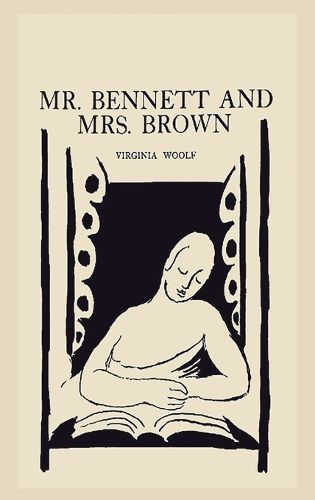Readings Newsletter
Become a Readings Member to make your shopping experience even easier.
Sign in or sign up for free!
You’re not far away from qualifying for FREE standard shipping within Australia
You’ve qualified for FREE standard shipping within Australia
The cart is loading…






This title is printed to order. This book may have been self-published. If so, we cannot guarantee the quality of the content. In the main most books will have gone through the editing process however some may not. We therefore suggest that you be aware of this before ordering this book. If in doubt check either the author or publisher’s details as we are unable to accept any returns unless they are faulty. Please contact us if you have any questions.
The author penned the article in 1923 and first presented it to the Heretics in 1924. The essay is an argumentative piece that tries to go beyond Arnold Bennett's thesis that characters are what novels are all about, and his too-simple explanation for why young writers haven't been able to make their characters seem real. Woolf picks 1910 as the year when things start to change in the way people treat each other. Why does this matter to her? Understanding the concept of a "real" character requires a comprehensive understanding of British society as a whole. This way, she uses Mrs. Brown to show how people really are.Her research shows how bad writers from the past were, especially those from the Edwardian and Georgian eras, and she concludes that they also failed to make characters that would last. History appears to favor Virginia Woolf in this case: while everyone is familiar with Mrs. Dalloway, neither the Edwardians nor the Georgians have left behind a single character. Instead, what readers remember are the actual settings they made with old tools.This version of the essay uses section headings and bold fonts to enhance the flow of ideas. Apart from that, we present the essay in its original form.
$9.00 standard shipping within Australia
FREE standard shipping within Australia for orders over $100.00
Express & International shipping calculated at checkout
This title is printed to order. This book may have been self-published. If so, we cannot guarantee the quality of the content. In the main most books will have gone through the editing process however some may not. We therefore suggest that you be aware of this before ordering this book. If in doubt check either the author or publisher’s details as we are unable to accept any returns unless they are faulty. Please contact us if you have any questions.
The author penned the article in 1923 and first presented it to the Heretics in 1924. The essay is an argumentative piece that tries to go beyond Arnold Bennett's thesis that characters are what novels are all about, and his too-simple explanation for why young writers haven't been able to make their characters seem real. Woolf picks 1910 as the year when things start to change in the way people treat each other. Why does this matter to her? Understanding the concept of a "real" character requires a comprehensive understanding of British society as a whole. This way, she uses Mrs. Brown to show how people really are.Her research shows how bad writers from the past were, especially those from the Edwardian and Georgian eras, and she concludes that they also failed to make characters that would last. History appears to favor Virginia Woolf in this case: while everyone is familiar with Mrs. Dalloway, neither the Edwardians nor the Georgians have left behind a single character. Instead, what readers remember are the actual settings they made with old tools.This version of the essay uses section headings and bold fonts to enhance the flow of ideas. Apart from that, we present the essay in its original form.